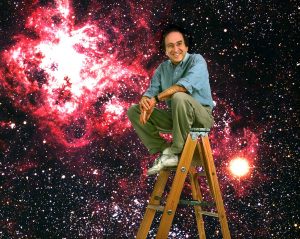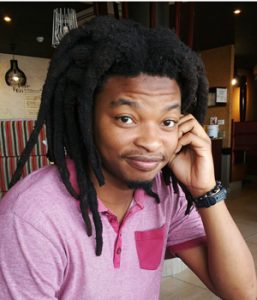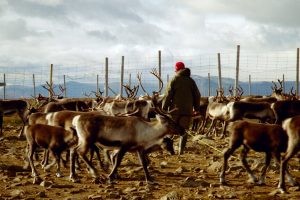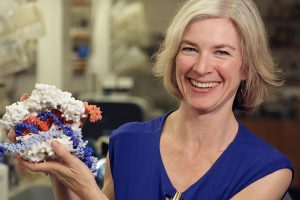THANK YOU
TO ALL OF OUR SUPPORTERS, VOLUNTEERS, + ATTENDEES, SEE YOU IN MEDELLÍN IN 2022!Congratulations to the organizers of WCSJ2019 and WCSJ2023!
Student Coverage
-

Student Journalists Produce 52 Reports from WCSJ2017
Rob IrionStudent science writers from around the world have created a set of 52 stories from the World Conference of Science Journalists 2017, spanning most of the meeting’s sessions and creating a valuable reference archive for journalists in the U.S. and abroad. The reports, along with bios of the authors, are online at the WCSJ2017 Student... Read More -

Will Cosmologists Save the World? Approaches from Scientific Training Could Shape Public Debates
Amelia JaycenBy Amelia Jaycen SAN FRANCISCO—Saul Perlmutter, a Nobel Prize–winning astrophysicist and cosmologist at Lawrence Berkeley National Laboratory, has spent a lot of his time ascertaining how quickly the universe is expanding. But he is also concerned with some down-to-earth issues, like the state of human interactions. As he watched public discussions unfold in the last... Read More -

Fact-Checking In the Age of “Fake News”: A Q&A With Brooke Borel and Alex Kasprak
Carolyn WilkeBy Carolyn M. Wilke SAN FRANCISCO—Is fact-checking the future of journalism? That question, at once disturbing for our society and promising for the increased role science journalists might play in combating fake news, drove a panel discussion among four experts on 30 October at the World Conference of Science Journalists 2017. The panelists, all experienced... Read More -

Science Podcasts: The Fun, the Challenges, and Tips from the Pros
Ellen RykersSAN FRANCISCO—Science podcasts are more popular than ever. Producing them takes time, technical savvy, and a deep passion to engage listeners with material that is both informative and fun. How does one start a science podcast and build a dedicated audience? Those topics drew an enthusiastic crowd on 27 October at the World Conference of... Read More -

How “Decolonizing” Science Can Make It Better
Liz KimbroughBy Liz Kimbrough SAN FRANCISCO—When South African student journalist Sibusiso Biyela sat down to write about the launch of the MeerKAT telescope in both English and Zulu, he thought it would be simple. The English version rolled out smoothly. But when he began to translate into Zulu, his native language, he found he would have... Read More -

How to Decolonize (or Decolonise) Science Communication
Diego GragliaSibusiso Biyela, one of this year’s student travel fellows, brought a South African perspective to a panel on the decolonization of science 27 October at the World Conference of Science Journalists. ‘We were taught that science has a western origin’ @AstroSibs at #WCSJ2017 #DecolonizeScience pic.twitter.com/NnVPCuO8kL — Oscar Miyamoto (@MiyamOtOscar) October 27, 2017 The panel also... Read More -

Earth, Wind & Fire: Reporting on Natural Disasters
UCSC SciComBy Jennifer Leman Despite flames, rains and the rolling waves of a shaking Earth, a journalist must report the news. Natural disasters like wildfires, hurricanes and earthquakes are among the most challenging topics a journalist will cover. Such field reporting is physically, mentally and emotionally draining—not to mention hazardous. In a 29 October plenary session... Read More -

Covering Sexual Harassment in Science: Journalists Weigh In On the Challenges
Liz KimbroughBy Liz Kimbrough SAN FRANCISCO—When the sexual harassment case of astronomer Geoffrey Marcy of the Univerity of California, Berkeley, came across her desk at BuzzFeed News, science reporter Azeen Ghorayshi was well equipped to break the story. Buzzfeed’s newsroom and legal team had years of experience handling sexual assault and sexual harassment stories on university... Read More -

How Indigenous Voices Should Shape Science Reporting
Jennifer LuBy Jennifer Lu SAN FRANCISCO—Indigenous voices are integral to science and science reporting. That’s why journalists should keep an open mind and be aware of political narratives when reporting on indigenous issues, four speakers said 28 October during a session at the World Conference of Science Journalists 2017. Key to keeping an open mind is... Read More -

The Good, the Bad, and the Unclear: Talking Gene Editing with Jennifer Doudna
Kelsey HarperBy Kelsey Harper SAN FRANCISCO—She wasn’t trying to create a gene-editing tool that would change the world. Jennifer Doudna was just curious—and she really liked RNA. She hadn’t always loved it, though. Scientists initially thought RNA, DNA’s single-stranded sibling, was a “throwaway molecule,” which sounded to Doudna “like the most boring molecule imaginable.” But when... Read More -

Lies, Damned Lies and Sloppy Statistical Analysis Make for Bad Journalism
Rithy OdomBy Rithy Odom To help science journalists better navigate the morass of statistics that supposedly hold discrete findings to some standard of reliability or truth, organizers of a World Conference of Science Journalists 2017 panel on separating statistical fact from fiction played to a full house of science communicators on 28 October. In the session,... Read More
